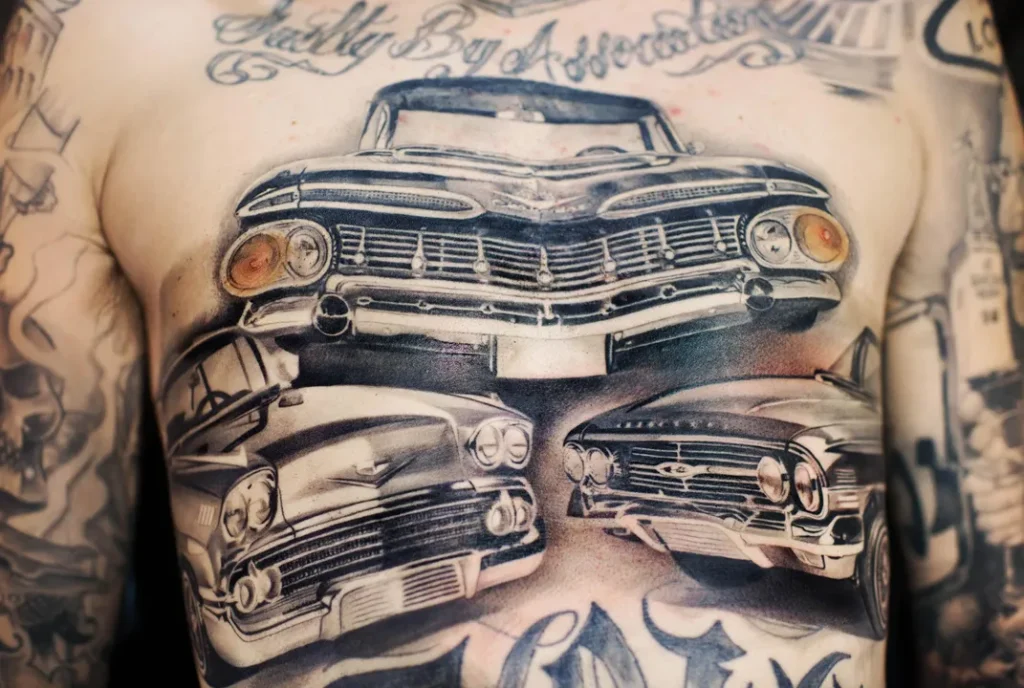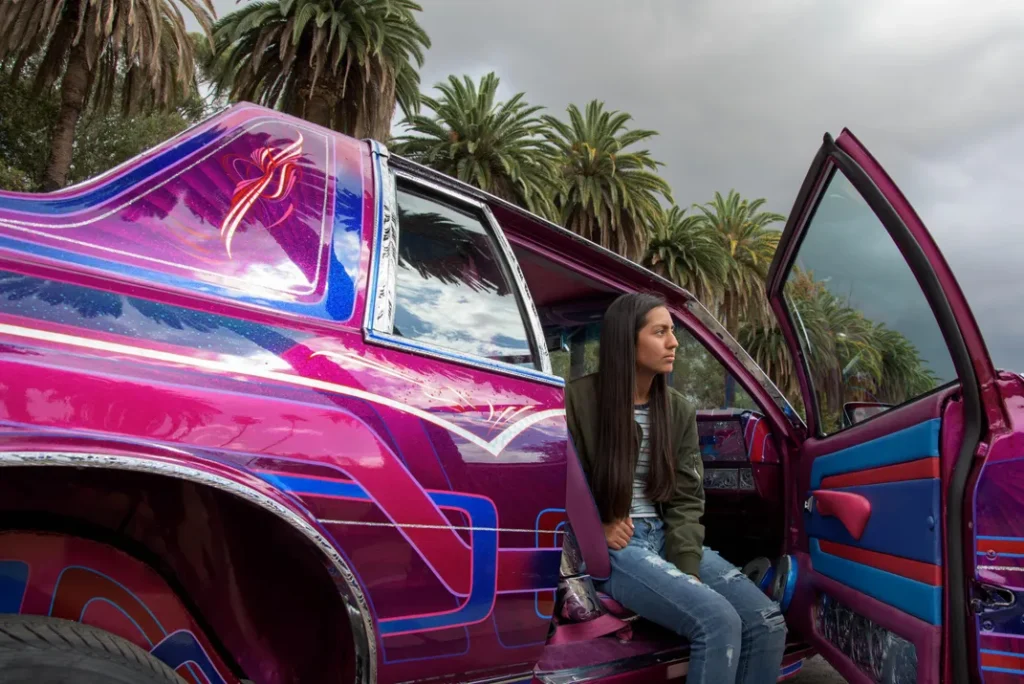Glittering under California’s golden sun, gliding “low and slow” through the streets of East Los Angeles, lowriders are far more than customized cars — they’re mobile expressions of cultural pride and resistance. With their candy-colored paint jobs, velvet interiors, and hydraulics that make them bounce with life, lowriders represent a deep-rooted identity within L.A.’s Mexican American community — one forged through artistry, activism, and unapologetic self-expression.
Photographer Kristin Bedford spent five years documenting this world for her book Cruise Night, embedding herself in car clubs and community events across the region. From weddings to quinceañeras, from streets to cemeteries, she captured the lowrider lifestyle not as an outsider peeking in, but as a participant respecting its heritage. Her photographs tell a powerful story: one in which aesthetics meet social commentary, and style becomes a statement of presence.
A Legacy Built in the Garage
The roots of L.A.’s lowrider culture trace back to the 1940s, a time when American car culture was booming — especially in Southern California’s expanding suburbs. Just like their white peers, many Mexican American veterans returned from World War II with mechanical training and a little money to spend. But while others chased speed with hot rods, Chicanos took a different road: one that embraced customization, creativity, and cool composure.

Instead of amping up engines for drag races, Mexican American mechanics would weigh down the rear of their Chevys — a car of choice thanks to its X-frame and affordability — to ride low to the ground. Then came the addition of hydraulics, allowing the cars to rise or bounce with the flick of a switch, outmaneuvering restrictive vehicle codes and enhancing the visual flair. What emerged wasn’t just a car style — it was an aesthetic philosophy: “low and slow,” deliberate and defiant.
The Movement Behind the Chrome
As the Chicano Movement gained momentum in the 1960s and ’70s, lowriding evolved into more than just a hobby. Car clubs like the Imperials or the Dukes became symbols of solidarity, community-building, and activism. Their gatherings weren’t just about flaunting custom rims or brilliant paint; they were stages for grassroots organizing, fundraising for labor rights, and celebrating cultural heritage.
Steve Velasquez, a curator at the Smithsonian’s National Museum of American History, views lowriding as a mirror of the Mexican American experience in the post-war era. He notes that while outsiders often saw the flashy cars, the clubs themselves prioritized unity and mutual aid. “The car part was 10 percent,” Velasquez says. “The social aspect was 90.”

During the height of the Chicano Movement, lowriders were adorned with murals of Aztec warriors, floral designs reminiscent of Diego Rivera’s murals, and symbols tied to Indigenous Mexican roots. These weren’t just decorations — they were affirmations of a history and identity that mainstream America too often ignored or distorted.
Misjudged by Law, Misrepresented by Media
Despite its vibrant artistry and tight-knit community, lowriding has long been stigmatized. In 1958, California passed a law that made it illegal to operate a car lower than the rims of its wheels, targeting the lowrider trend. In response, hydraulic lifts became standard — not just as a performance tool, but as an act of resistance. Hollywood’s portrayal of lowriders as gang-related only deepened the public’s misunderstanding.
Photographer Estevan Oriol, a member of the Pegasus Car Club and longtime documentarian of Chicano culture, sees this misrepresentation as not just unfair, but absurd. “No one’s robbing a bank in a bright yellow custom lowrider,” he quips. For him and many others, lowriding is a legacy passed down through generations, a lifestyle steeped in care and craftsmanship.

Oriol’s own connection to lowriding predates his career behind the camera. His first car — a Chevy Impala SS — wasn’t just a vehicle, but a symbol of belonging. For him, there’s no better joy than cruising across L.A.’s iconic Sixth Street Bridge, music blaring, city lights glinting off polished chrome, a slow-roll performance that transforms asphalt into stage.
“I’m Here”: Cars as Canvases
For Bedford, the allure of lowriding lies in its fusion of art and activism. She calls these vehicles “mobile canvases” — every detail, from airbrushed scenes of Mesoamerican mythology to shimmering upholstery, tells a personal and collective story. Her approach to photography was organic: no editorial team, no storyboard — just intuition and respect.
“I live in mystery for my entire project,” she explains. “I let the photos tell me what it’s about.” This open-mindedness allowed her to capture the nuances of a culture that’s often overlooked. In one photo, a young girl gazes into the distance with a flower tucked behind her ear — a subtle nod to Pachuca style and the Zoot Suit Riots, when fashion became a tool for protest and cultural assertion.

The themes of heritage, family, and pride course through Cruise Night. Today, even as fewer people purchase their own lowriders, the culture lives on — not in showrooms, but in driveways and family garages. Cars are passed down like heirlooms, each one carrying the stories of those who shaped it.
More Than Metal
What Bedford and Oriol both emphasize is that lowriding isn’t a trend — it’s a way of life. It’s Sunday afternoons spent detailing chrome. It’s fathers teaching sons and daughters how to adjust hydraulics. It’s gathering on Whittier Boulevard or Elysian Park, revving up memories, not just engines.
Lowriding is how a community claims space in a city that hasn’t always made room for them. And with each bounce, glide, and gleam, it announces, “We’re still here. And we’re rolling in style.”




